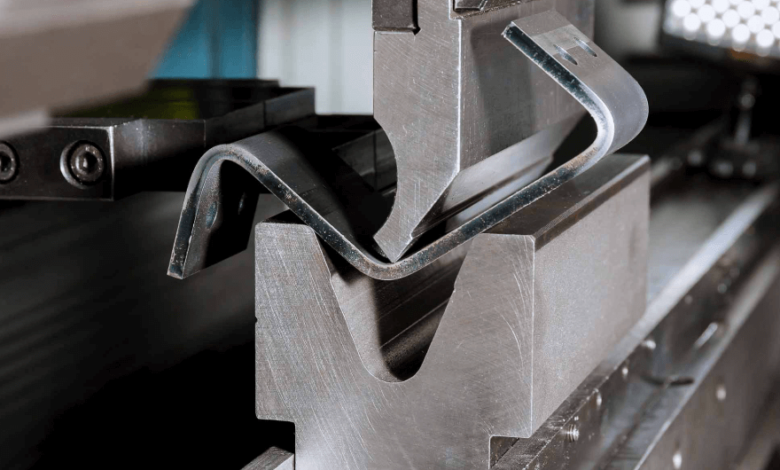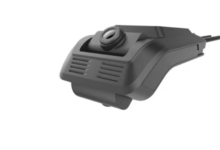Precision in Every Bend: The Evolution and Importance of Metal Forming Services

In today’s manufacturing world, the demand for precision, efficiency, and versatility is at an all-time high. From automotive components and architectural frameworks to aerospace structures and household appliances, nearly every industry relies on some form of metalwork. Among these processes, metal forming services play a critical role in shaping raw materials into functional parts without compromising strength or integrity.
Modern metal forming services have evolved dramatically, combining traditional craftsmanship with automated innovation. Whether you’re a design engineer, production manager, or entrepreneur, understanding how these services work—and how they can benefit your production line—is essential for long-term success in a competitive market.
What Are Metal Forming Services?
Metal forming services encompass a broad range of industrial processes used to shape and manipulate metal into desired forms without removing material. Unlike machining, which relies on cutting away excess material, forming involves deformation—pushing, pulling, compressing, or bending metals to achieve the required shape.
Common forming methods include:
- Stamping
- Bending
- Rolling
- Forging
- Extrusion
- Deep drawing
- Spinning
- Hydroforming
These services are employed in the production of everything from sheet metal enclosures to complex mechanical parts with tight tolerances.
See also: XRP Technical Analysis Explained: How to Predict Price Movements Like a Pro
The Science Behind Metal Forming
At the heart of metal forming services lies material science. Metals possess malleability and ductility, which allow them to change shape under pressure without breaking. When force is applied beyond the elastic limit but below the fracture point, the metal undergoes plastic deformation.
Factors influencing forming include:
- Material properties (e.g., hardness, grain structure)
- Temperature (cold forming vs. hot forming)
- Tooling geometry
- Speed and pressure of the forming process
Modern computer simulations and finite element analysis (FEA) are used to model stress distribution and prevent part failure before production begins.
Types of Metal Forming Services
1. Stamping
Stamping involves pressing flat sheet metal into a die to form shapes like brackets, panels, or hinges. It is cost-effective for high-volume production and offers excellent repeatability.
2. Forging
Forging compresses metal between two dies, creating extremely strong components ideal for automotive, aerospace, and heavy machinery applications.
3. Rolling
Rolling is used to reduce the thickness of metal sheets or to create long products like beams and tubes. Cold rolling improves surface finish and dimensional accuracy.
4. Bending
This process creates angles or curves in sheet metal using press brakes. It’s widely used in making enclosures, panels, and framework.
5. Extrusion
Extrusion forces metal through a die, producing consistent cross-sectional profiles such as rods, bars, or channels.
6. Hydroforming
Hydroforming uses high-pressure fluids to form metal into complex, seamless shapes. It’s ideal for lightweight automotive or aerospace parts.
Benefits of Using Professional Metal Forming Services
Outsourcing your forming requirements to specialized metal forming services providers offers several advantages:
✅ Precision and Consistency
Advanced CNC-controlled machinery ensures every part meets tight tolerances, regardless of complexity.
✅ High Production Rates
Processes like stamping and roll forming are optimized for volume production, reducing unit costs.
✅ Material Efficiency
Because forming reshapes metal rather than removing it, there’s minimal waste—making it more sustainable and cost-effective.
✅ Stronger Components
Parts formed via forging or cold working often exhibit improved mechanical properties, such as enhanced strength and fatigue resistance.
✅ Design Flexibility
From standard profiles to custom one-off designs, forming services can accommodate a wide variety of geometries.
Applications Across Industries
Metal forming services are indispensable to nearly every sector:
- Automotive: Chassis components, exhaust parts, brackets, and wheel rims.
- Aerospace: Wing spars, fuselage skins, turbine blades, and seat frames.
- Construction: Beams, metal panels, rebar ties, and railing structures.
- Electronics: Enclosures, heat sinks, and metal frameworks.
- Furniture and Appliances: Drawer slides, door panels, and metal frames.
How to Choose the Right Metal Forming Partner
Finding the right metal forming services provider requires a strategic approach. Here’s what to look for:
1. Experience & Expertise
Look for companies with a strong track record in your industry. Experienced teams are better equipped to handle complex projects.
2. Tooling Capabilities
Ensure they offer a variety of forming processes—especially if you need custom or multi-step production.
3. Material Range
From carbon steel and aluminum to titanium and exotic alloys, a wide material inventory means more versatility for your design needs.
4. Quality Assurance
Certifications like ISO 9001 or AS9100 signal robust quality control processes that minimize defects and ensure product reliability.
5. Lead Time and Delivery
Ask about production turnaround and delivery logistics. On-time production is crucial for maintaining your supply chain.
The Role of Automation in Modern Metal Forming
With the integration of Industry 4.0 technologies, metal forming services have entered a new era of automation and digital intelligence.
- Robotic arms assist in material loading/unloading.
- AI-based quality control systems detect micro-defects in real-time.
- IoT sensors monitor press operations and optimize machine maintenance.
- Cloud platforms track orders, tooling updates, and customer feedback.
This technological leap reduces human error, shortens lead times, and improves overall product consistency.
Sustainability in Metal Forming
Sustainability is becoming a core concern for manufacturing. Fortunately, metal forming services align well with environmental goals due to:
- Lower scrap rates compared to machining
- Recyclable materials like aluminum and steel
- Energy-efficient cold forming methods
- Process automation that reduces resource consumption
Many providers now use eco-friendly lubricants, water-based coolants, and green power sources to further reduce their carbon footprint.
Challenges and Considerations
While the benefits of metal forming services are significant, they come with challenges:
- Tooling Costs: Custom dies and fixtures can be expensive for low-volume runs.
- Springback in Bending: Materials may rebound slightly after bending, requiring compensation in design.
- Material Selection: Choosing the wrong alloy can lead to cracking or deformation issues during forming.
- Minimum Order Quantities: Some providers may only accept bulk orders to justify tooling investments.
Working closely with engineers during the design phase can mitigate these risks.
Final Thoughts
As industries strive to innovate faster while maintaining cost and quality control, metal forming services have emerged as a key enabler. Their ability to create strong, lightweight, and precise components makes them essential to modern manufacturing.
With advancements in automation, materials science, and sustainability, the future of metal forming services is not just about shaping metal—but about shaping the future of how we build, innovate, and engineer.







